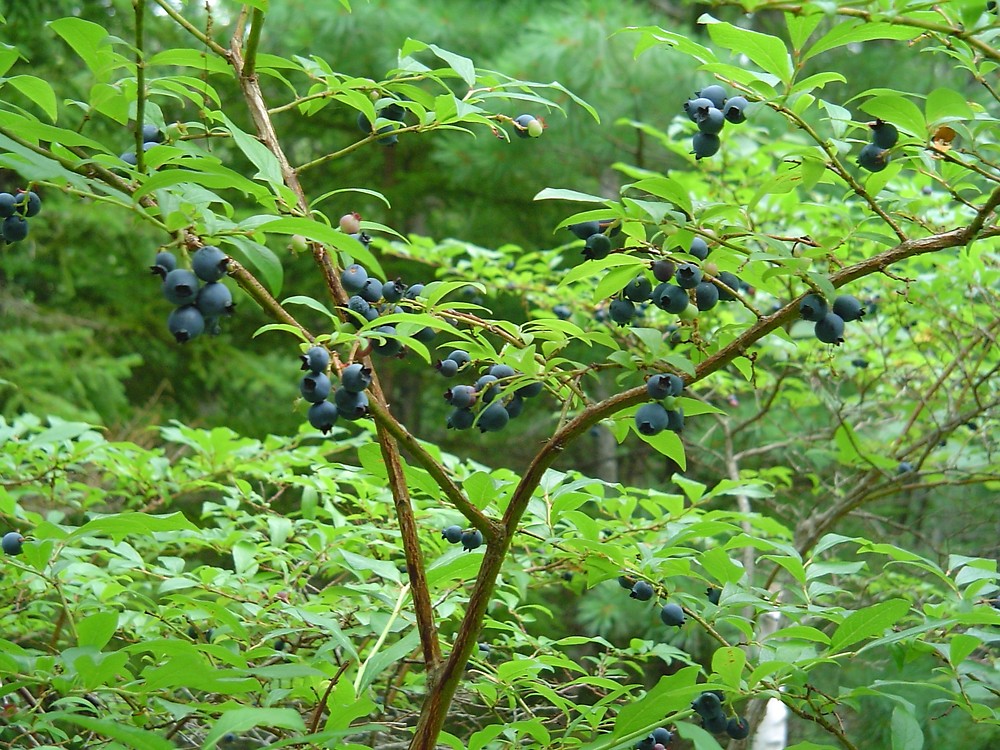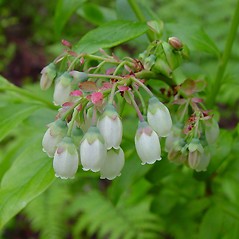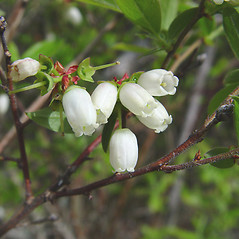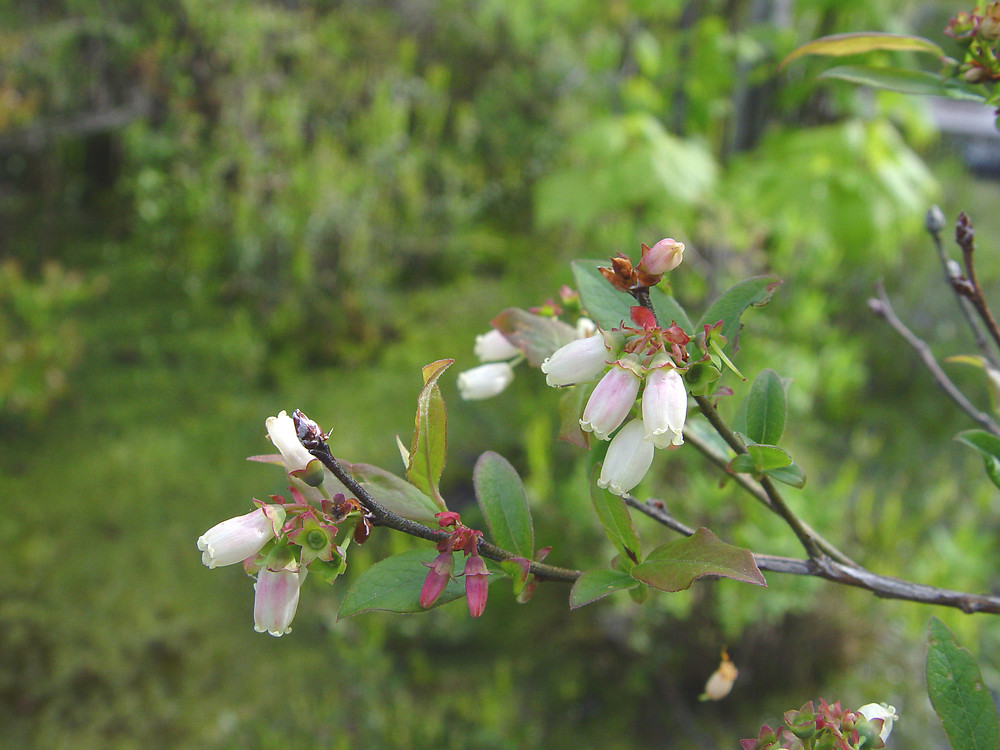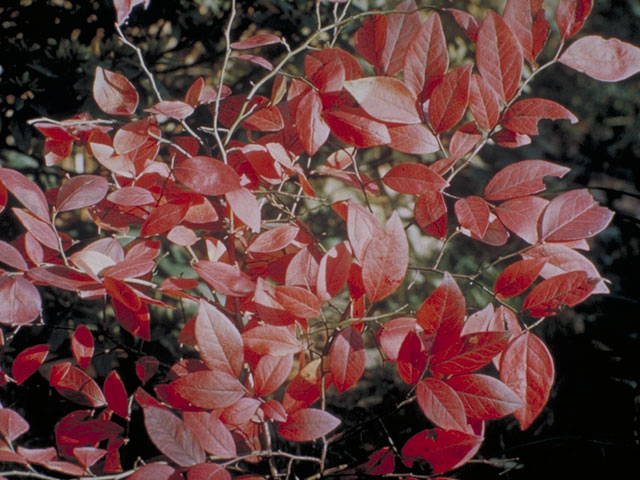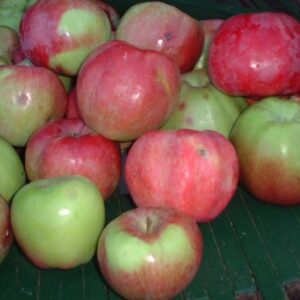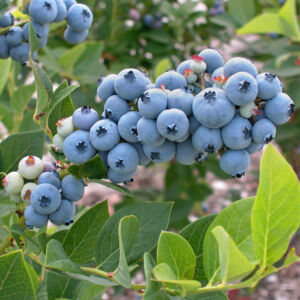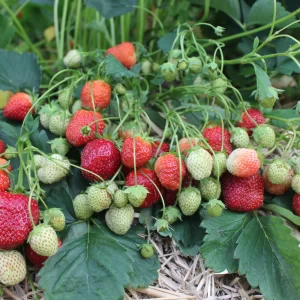 Out of stock
Out of stock Wild Highbush Blueberry (Vaccinium corymbosum)
3 for $39
Wild highbush blueberries are predominately found in wetland margins, moist woods, bogs, swamps and low areas. Berries mature in August – try to beat the birds. Many birds, including catbirds, scarlet tanagers, and thrushes, relish the berries. As do bears. Old shrubs can take on an interesting, gnarled appearance with a spreading crown.
The upright, deciduous shrub native to eastern North America. Mature plants will reach around 5-8’ tall with an equal spread and a dense, rounded habit. Foliage flashes bright shades of coppery red in fall. Loose clusters (“corymbs”) of white-pale pink, pendulous, urn-shaped flowers bloom in spring. The round, sweet berries are dark blue to purple, have a dull, blue-grey bloom on their surface, and incorporate the sepals.
For best fruit production, you will want to plant several within 10-25 foot of each other. These are not named varieties, so not bred for bountiful harvests but you can do your own selection or cherish their wild traits. These rooted cuttings come from Michigan. 1 year old rooted cuttings. Photo Credit: © Arthur Haines, Native Plant Trust
Out of stock

